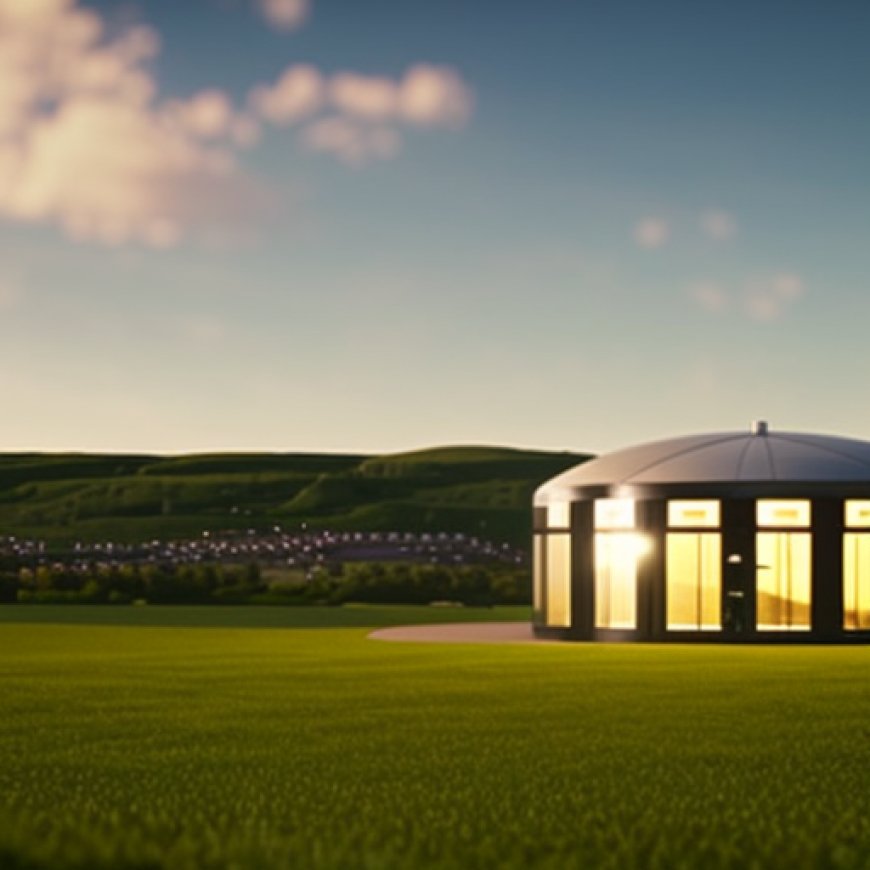Exeter-headquartered anaerobic digestion facilities acquired
Exeter-headquartered anaerobic digestion facilities acquired by ENGIE Business Live


Anaerobic Digestion Company Acquired by ENGIE

Introduction
An Exeter-headquartered anaerobic digestion (AD) company, Ixora Energy, has been acquired by renewable energy firm ENGIE from Downing LLP. This acquisition will expand ENGIE’s portfolio with the addition of Ixora Energy’s three sites in the South West region of the UK.
IXora Energy’s Operations
Ixora Energy operates three plants in the South West: Gorst Energy in Clyst St Mary, Condate Biogas in South Molton, and Sustainable Energy Generation in Somerset. The company specializes in processing energy crops, agricultural waste, and animal manures to produce biogas. This biogas is then utilized to generate renewable electricity or gas, which is injected into the local gas and electricity grid, benefiting thousands of homes in the vicinity of each plant.
ENGIE’s Expansion and Commitment to Sustainable Development Goals (SDGs)
ENGIE, already established as a renewable gas producer in France, aims to strengthen its presence in the UK green energy market through the acquisition of Ixora Energy. This strategic move aligns with ENGIE’s commitment to a diversified energy mix for a reliable and affordable energy transition. It also reflects their dedication to shaping the UK and Europe’s path to decarbonization. ENGIE’s significant investments and strategic focus on renewable gases position them to support the UK’s energy transition goals and contribute to achieving the SDGs. The company envisions a long-term commitment to innovation, progress, and strong support for local communities.
Anne-Laure Chassanite, representative of ENGIE, stated, “Our aim is to act as a champion of zero carbon energies that have a positive impact on people and the planet. We are proud to be working alongside the team at Ixora in achieving this bright future.”
Positive Outlook and Collaboration
Darren Stockley, managing director of Ixora, expressed excitement about joining ENGIE and being part of their ambitions for the UK’s green energy future. He believes that the combined expertise and experience of both companies will create a powerful synergy. Stockley looks forward to contributing to ENGIE’s commitment to reach net zero carbon emissions by 2045.
Conclusion
The acquisition of Ixora Energy by ENGIE marks a significant step towards expanding ENGIE’s presence in the UK green energy market. By utilizing anaerobic digestion technology, Ixora Energy contributes to the generation of renewable electricity and gas, aligning with the SDGs. ENGIE’s commitment to a diversified energy mix and their focus on renewable gases demonstrate their dedication to achieving a sustainable and decarbonized future.
SDGs, Targets, and Indicators
-
SDG 7: Affordable and Clean Energy
- Target 7.2: Increase substantially the share of renewable energy in the global energy mix
- Indicator 7.2.1: Renewable energy share in the total final energy consumption
-
SDG 13: Climate Action
- Target 13.2: Integrate climate change measures into national policies, strategies, and planning
- Indicator 13.2.1: Number of countries that have integrated mitigation, adaptation, impact reduction, and early warning into primary, secondary, and tertiary curricula
-
SDG 15: Life on Land
- Target 15.9: By 2020, integrate ecosystem and biodiversity values into national and local planning, development processes, poverty reduction strategies, and accounts
- Indicator 15.9.1: Progress towards national targets established in accordance with Aichi Biodiversity Target 2 of the Strategic Plan for Biodiversity 2011-2020
Analysis
The article discusses the acquisition of Ixora Energy by ENGIE, a renewable energy firm. The acquisition aims to strengthen ENGIE’s presence in the green energy market and support the UK’s energy transition goals.
1. Which SDGs are addressed or connected to the issues highlighted in the article?
The issues highlighted in the article are connected to SDG 7 (Affordable and Clean Energy), SDG 13 (Climate Action), and SDG 15 (Life on Land).
2. What specific targets under those SDGs can be identified based on the article’s content?
Based on the article’s content, the specific targets identified are:
- Target 7.2: Increase substantially the share of renewable energy in the global energy mix
- Target 13.2: Integrate climate change measures into national policies, strategies, and planning
- Target 15.9: By 2020, integrate ecosystem and biodiversity values into national and local planning, development processes, poverty reduction strategies, and accounts
3. Are there any indicators mentioned or implied in the article that can be used to measure progress towards the identified targets?
The article does not explicitly mention any indicators. However, the following indicators can be used to measure progress towards the identified targets:
- Indicator 7.2.1: Renewable energy share in the total final energy consumption
- Indicator 13.2.1: Number of countries that have integrated mitigation, adaptation, impact reduction, and early warning into primary, secondary, and tertiary curricula
- Indicator 15.9.1: Progress towards national targets established in accordance with Aichi Biodiversity Target 2 of the Strategic Plan for Biodiversity 2011-2020
SDGs, Targets, and Indicators
| SDGs | Targets | Indicators |
|---|---|---|
| SDG 7: Affordable and Clean Energy | Target 7.2: Increase substantially the share of renewable energy in the global energy mix | Indicator 7.2.1: Renewable energy share in the total final energy consumption |
| SDG 13: Climate Action | Target 13.2: Integrate climate change measures into national policies, strategies, and planning | Indicator 13.2.1: Number of countries that have integrated mitigation, adaptation, impact reduction, and early warning into primary, secondary, and tertiary curricula |
| SDG 15: Life on Land | Target 15.9: By 2020, integrate ecosystem and biodiversity values into national and local planning, development processes, poverty reduction strategies, and accounts | Indicator 15.9.1: Progress towards national targets established in accordance with Aichi Biodiversity Target 2 of the Strategic Plan for Biodiversity 2011-2020 |
Behold! This splendid article springs forth from the wellspring of knowledge, shaped by a wondrous proprietary AI technology that delved into a vast ocean of data, illuminating the path towards the Sustainable Development Goals. Remember that all rights are reserved by SDG Investors LLC, empowering us to champion progress together.
Source: business-live.co.uk

Join us, as fellow seekers of change, on a transformative journey at https://sdgtalks.ai/welcome, where you can become a member and actively contribute to shaping a brighter future.







